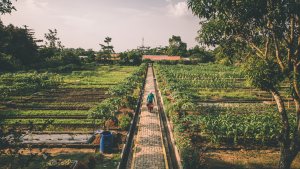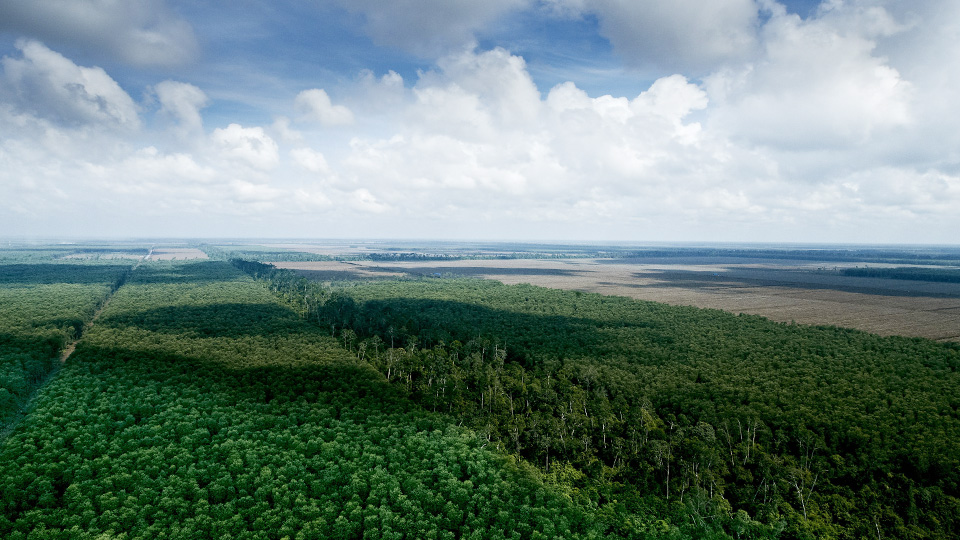Paper, Please
- Details
Here is how paper has the potential to contribute to a sustainable future.
Paper is an inseparable part of our lives. From the box that contains our breakfast cereal to the documents we print for work, paper is widely used in all aspects of our day. There are many types of paper available in the market today, which we'll get into shortly. But first, let's talk about the global demand for eco-friendly paper amid rising awareness of sustainability. What is eco-friendly paper?
We understand that paper is made from wood pulp, and that pulp originates from freshly cut trees. However, contrary to popular belief, with the appropriate management and guidelines, wood is a truly renewable and sustainable resource.

Paper is an inseparable part of our lives
Producing paper sustainably means it requires all producers to adhere to specific guidelines that allows their natural resources to be well-managed and protected. Through innovative solutions, such as tree replanting and area mapping, it is possible to ensure that responsible wood, pulp and paper production contributes to healthy growing forests.
Forest certification is built on the premise that sustainable production processes and supply chains can lower environmental risks while maintaining commercial industries' growth. Therefore, paper products that carry Programme for Endorsement of Forest Certification (PEFC) or Indonesia's Timber Legality Assurance System (SVLK) label are sure to come from sustainable forests.
For local consumers, this means we can trace our chosen paper products back to its sustainable sourcing methods, which have been approved and are imposed by the Indonesian Ministry of Environment and Forestry (KLHK).
To print or not to print
Back in the mid-2000s, when technology made it possible for books, personal notes and publications to take on electronic form, paper was expected to soon become obsolete. Major publishing houses readied themselves for a time when physical books become a thing of the past, including major local houses like Kompas Gramedia, arguably the largest publishing conglomerate in Indonesia.
In 2016, Kompas Gramedia began to push for content digitalization by acquiring, at the time, the country’s largest online publishing platform, SCOOP. Two years later, in 2018, after completing an integration process, they launched Gramedia Digital, which successfully transitioned offline store activities into online offerings — though it is important to note that the platform sells both electronic and physical books.
Kompas Gramedia’s strategy is to not alienate printed books in the face of digital disruption, and rather to make it easier for readers to access their printed books through a digital platform, while also providing limited selections of e-book titles. Therefore, Gramedia Digital serves more as an online store that replicates the services and product variety in its physical stores, with an additional option for readers to purchase e-books.
The strategy to turn Gramedia Digital into an online shop bore fruit during the pandemic, as print sales increased by 90 per cent between January and May 2020.
Perhaps it comes as a shock to some people that a publishing house as large as Kompas Gramedia hasn’t gone fully digital; but the reason is quite simple: in Indonesia, the penetration of e-books is still quite low. According to Tech in Asia, e-book sales only account for less than two per cent of total book sales in Indonesia.
It’s true that digital disruptions have shaken the media, music and entertainment industries around the world, including in Indonesia; however, where books and reading experiences are concerned, printed books are still way ahead of their digital counterparts. The easiest explanation for this is the fact that e-books cost almost just as much as printed books, especially for local titles. For example, Raditya Dika’s book, Koala Kumal, costs US3.60 (IDR 50,000) per physical copy; while the digital format costs USD3.17 (IDR 44,000) after discount.
These strengthen the fact that paper is far from dead or dying. In fact, according to Report Buyer, the global book printing market is anticipated to reach a value of USD49 billion by 2024, which highlights more than one per cent growth since 2018.
Types of paper
So, now that you know the global printing industry is alive and well, let’s take a look at the different types of paper available to you.
Recycled paper
If you’re looking to reduce your carbon footprint, this is the perfect choice of paper. Made from recycled paper pulp, this type of paper is an energy-efficient way to cut down on resource use, because it takes 70% less energy and water to recycle paper than to produce new paper from trees. More than that, according to Reader’s Digest, paper is one of the nine most recyclable materials in the world.
Matte-coated and gloss-coated paper
You know what each type feels like, but you probably have no idea what they’re called. Gloss paper has a smooth tactile feel, and when you put it under a light, it shines. This type of paper enhances colors and is perfect for brochures, photos and flyers. Matte-coated paper, on the other hand, works the opposite way. It has a muted surface and light is refracted subtly and evenly to avoid glare. This type of paper is popular for magazines, books and other copy-based print products.
Silk-coated paper
What if you want a type of paper that is somewhere between matte-coated and gloss-coated? Well, look no further than silk-coated paper. It is smooth like gloss-coated paper, but it doesn’t have the shine. It also feels luxurious, because it is created from silk fibers. Silk-coated paper has the premium quality of gloss-coated paper, but all the matte-coated paper benefits (ink-to-paper contrast). This type of paper is used for high-quality business collateral to create a sense of distinction and prestige.
Bond paper
This is a durable, robust and long-lasting type of paper. The lack of coating makes it easy to use for printers or for writing; although it also means this particular type of paper is prone to tears, scuffs and stains.
Environmental responsibility
Producing the best quality paper with the lowest possible impact on the environment has been the primary concern of PaperOne, APRIL Group's flagship brand. Its paper products are PEFC-certified and are proven to reduce ink use while providing smudge-free, vibrant and crisp lines – perfect for a stand-out visual presentation.

PaperOne™ is made from 100% renewable fibre and is sold in more than 70 countries worldwide
Renowned for its range of premium quality paper made from 100 per cent renewable plantation fiber, PaperOneTM offers the best solution for printing and copying. Launched by APRIL Group in 1998, it has become an industry leader in home, office and commercial printing paper products, which stacks up well against other international brands in all aspects, ie. thickness, opacity and archival quality. More than that, PaperOneTM products are readily accessible in over 70 countries — delivering consistent performance in producing professional printing quality, while minimizing environmental impact.
Innovation is the key to progress. As consumers become more aware and selective toward the types of paper they purchase, companies must explore ways to create sustainable solutions in line with development goals.
More Articles






